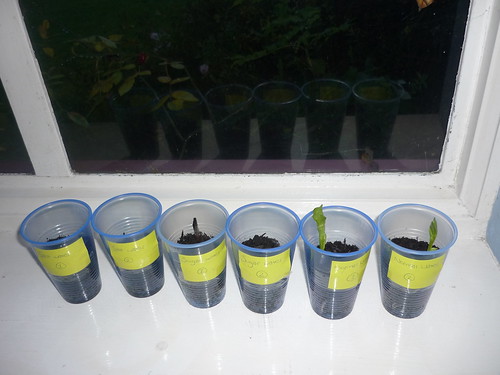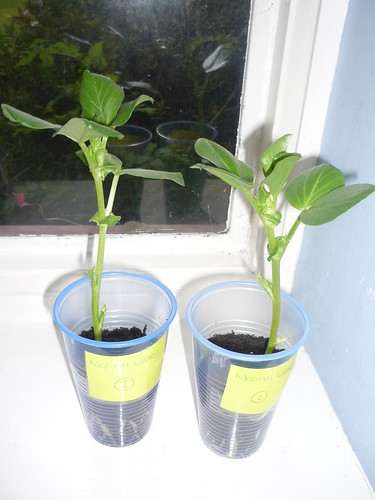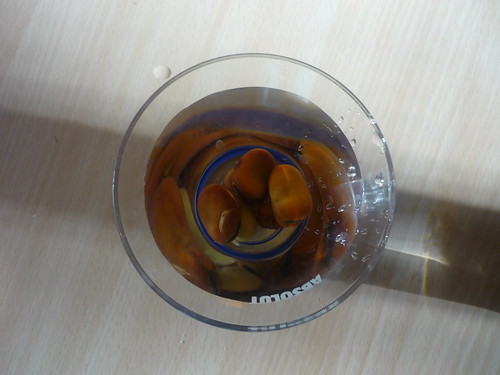
As part of our primary science course we have been asked to carry out an investigation into plant growth. We were given 6 beans, 6 cups and some soil. We have chosen to exlore what effect different types of water has on the growth of the beans. To investigate this we decided to water each plant with different types of water; 2 beans watered with normal tap water, 2 beans watered with sugar water and 2 beans in salt water. We chose these variables because we know that some plants can survive in salt water and so we were interested to see if the beans could grow in these conditions. Likewise, we also wanted to find out if water with sugar in had any effect on beans' growth.
- The dependent variable in this experient is the height of the bean, measured in cms.
- The independent variable is the type of water
- The control variables are the amount of water, the concentration of sugar/salt, the position of the beans.
By having these control variables we are helping to make a fair test. Also, by having 2 beans in each condition and thus repeating the experiement our results will be more reliable and replicable.
Our hypothesis is that the beans watered with plain water will be the healthiest and grow the quickest. We think those watered with salt water and sugar water will be less successful. We think this because we know that plants need precise amounts of minerals from the soil in order to grow successfully and that by adding sugar and salt we are deliberately altering the balance of minerals.








